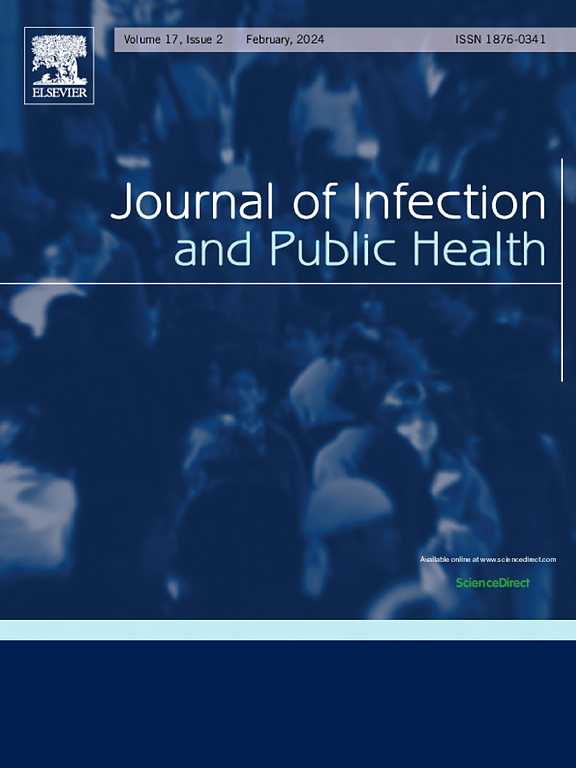Assessing post-COVID-19 functional recovery in healthcare workers: Insights from the 6-minute walking test and DLCO analysis
IF 4.7
3区 医学
Q1 INFECTIOUS DISEASES
引用次数: 0
Abstract
Introduction
The COVID-19 pandemic has impacted healthcare workers (HCWs) worldwide, necessitating an understanding of its effects on their health and functional capacity. This study utilized the 6-Minute Walk Test (6MWT) and pulmonary function test (PFT) to evaluate post-infection recovery of HCWs, and analyzed the results in relation to comorbidities, symptoms, and healthcare admission.
Methods
HCWs who previously tested positive for SARS-CoV-2 were recruited, and the 6MWT and PFT were conducted. Clinical data, including comorbidities, symptoms, hospitalization history, intensive care unit (ICU) admission, and mechanical ventilation, were collected. Binary logistic regression analysis and Fisher's exact test were employed to examine the associations between these factors and diffusing capacity of the lungs for carbon monoxide (DLCO) and the 6MWT.
Results
The study comprised 80 HCWs, with various comorbidities and various presenting symptoms. On average, 167.24 days (± 63.83 days) post-SARS-CoV-2 infection, 34 (42.5 %) had a DLCO% < 80 % of the predicted value, while 46 (57.5 %) had a DLCO% of ≥ 80 %. The mean six-minute-walk distance (6MWD) was 400.6 ± 54.1 m. No significant associations were found between DLCO% and most of the factors examined, except for Forced Expiratory Flow 25–75 % (FEF25–75 %), although this was not statistically significant (P=0.069).
Conclusion
The study provides significant data regarding the functional recovery of HCWs who have recovered from COVID-19 using the 6MWT. Importantly, the findings demonstrated that SARS-CoV-2 infection did not substantially impair the pulmonary functional capacity of HCWs.
求助全文
约1分钟内获得全文
求助全文
来源期刊

Journal of Infection and Public Health
PUBLIC, ENVIRONMENTAL & OCCUPATIONAL HEALTH -INFECTIOUS DISEASES
CiteScore
13.10
自引率
1.50%
发文量
203
审稿时长
96 days
期刊介绍:
The Journal of Infection and Public Health, first official journal of the Saudi Arabian Ministry of National Guard Health Affairs, King Saud Bin Abdulaziz University for Health Sciences and the Saudi Association for Public Health, aims to be the foremost scientific, peer-reviewed journal encompassing infection prevention and control, microbiology, infectious diseases, public health and the application of healthcare epidemiology to the evaluation of health outcomes. The point of view of the journal is that infection and public health are closely intertwined and that advances in one area will have positive consequences on the other.
The journal will be useful to all health professionals who are partners in the management of patients with communicable diseases, keeping them up to date. The journal is proud to have an international and diverse editorial board that will assist and facilitate the publication of articles that reflect a global view on infection control and public health, as well as emphasizing our focus on supporting the needs of public health practitioners.
It is our aim to improve healthcare by reducing risk of infection and related adverse outcomes by critical review, selection, and dissemination of new and relevant information in the field of infection control, public health and infectious diseases in all healthcare settings and the community.
 求助内容:
求助内容: 应助结果提醒方式:
应助结果提醒方式:


